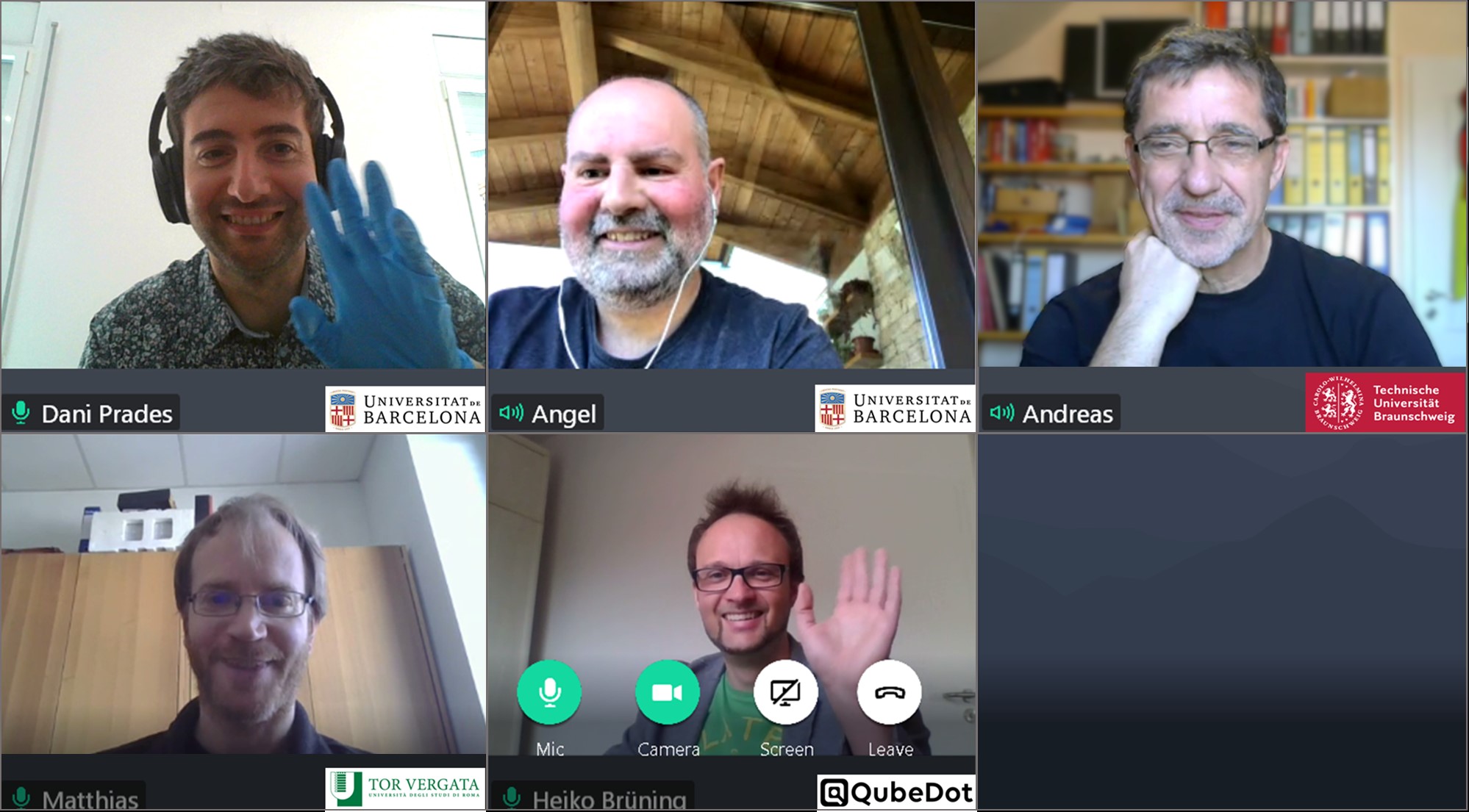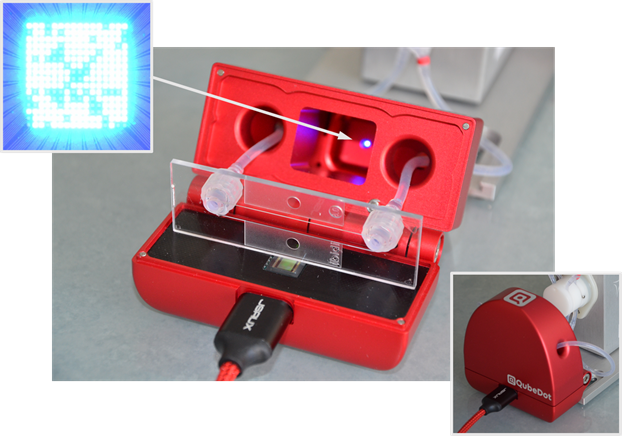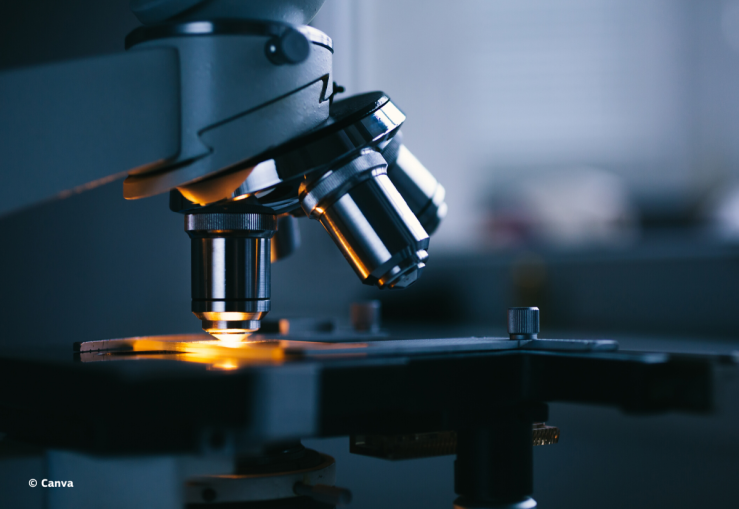The idea behind the SMILE project follows the outcomes of an ongoing FET-Open (EIC Pathfinder) project called ChipScope, which focuses on developing the first chip-sized optical microscope with super-resolution capabilities, and semiconductor nanoLED arrays with individual pixel operation. Such highly integrated nanoLED arrays from ChipScope will lead to extreme miniaturization and simplicity for super-resolution microscopy.
In contrast to the previous approach utilized by ChipScope, SMILE orients its attention to larger microLED arrays, which allow light intensities to be orders of magnitude higher. Larger dimensions enable hybrid integration with CMOS microelectronics (i.e. microelectronics based on complementary metal-oxide-semiconductor technologies), which leads to a full scalability of the microLED platform in terms of number of pixels, intensity, switching speed and reduction of cost in a mass production situation. Moreover, microLEDs can be combined with existing color converter technology, resulting in substantial flexibility concerning wavelength control. In effect, this technology could also be used for activating and manipulating chemical or biological reactions in a very small reaction volume.

SMILE gives very high priority to market replication. For that reason, the project will constitute an “End-User Board” (EUB) of experts from various branches, who will discuss requirements to be met and will perform SMILE test experiments. Prof. Juan Daniel Prades (University of Barcelona), the project coordinator, comments:
I am pleased about the encouragement and contributions we have received from the members of our End User Board already during the drafting of the application. The End User Board consists of multinational companies, smaller SMEs, and also interdisciplinary research institutes. This shows the wide reach that we want to achieve with SMILE platforms. It is great to achieve this goal with partners from all over Europe.
SMILE prototypes will be available to the End User Board for testing and market validation in at least 5 different Pilot Applications addressing quickly increasing markets:
- DNA chip fabrication: A DNA chip (also known as biochip) is a collection of microscopic DNA spots attached to a solid surface. Scientists use DNA chips to measure the expression levels of large numbers of genes simultaneously or to genotype multiple regions of a genome.
- Maskless photolithography: Maskless photolithography employs methods that directly transfer the information onto the substrate (without utilizing an intermediate static mask) that is directly replicated. The concept takes advantage of high speed or parallel manipulation technologies that have been enabled by large computing capacity in order to achieve high replication throughputs as demanded for in industrial micro-patterning.
- Optogenetics: Optogenetics is a biological technique that uses light to control genetically modified neurons, which are able to express light-sensitive ion channels.
- High-throughput fluorescence microscopy: High-throughput fluorescence microscopy utilizes an optical microscope that uses fluorescence to study the properties of large quantities of researched substances.
- Chip-based holographic microscopy: Chip-based Holographic microscopy is a type of microscopy that combines holography and chip-based technology with microscopy to allow transparent cells to be visualized with classic cell culture plates.
Prof. Andreas Waag (Technical University of Braunschweig), who is the scientific coordinator of the project, adds:
The idea of the European Innovation Council to bridge the gap between Pathfinder projects and real innovation is extremely attractive for us. The applications of the SMILE platform are so manifold that our SMILE technology can only be spread out by a close collaboration with our End User Board. Other companies can of course apply to join the End Users Board now.

The participants of the SMILE project are from Spain (Universitat de Barcelona – Department of Electronic and Biomedical Engineering), Germany (Technische Universität Braunschweig – Institute for Semiconductor Technology; and QubeDot GmbH) and Italy (Università degli Studi di Roma “Tor Vergata” – Department of Electronic Engineering). The project will be implemented within 24 months since its start in December 2020.
SMILE is one of the 13 projects that have succeeded in the EIC Transition to Innovation Activities call (FETPROACT-EIC-06-2019). The call sought for promising technologies as they were at the end of a typical FET-Open or FET Proactive project (i.e., TRL 2/3) to a level of development, validation and demonstration where they became a credible basis for entrepreneurship, business creation, investment and, ultimately, economic and/or societal returns. The call invited applications to further develop results from previous or on-going FET projects in the 5 areas: micro and nano-technologies (where SMILE had applied), artificial intelligence and advanced robotics, technologies for the life sciences, health and treatment, low-carbon energy and climate change technologies and interaction technologies.
For more information, see also the article about the current FET-Proactive calls for proposals.
Background information
FET-Open and FET Proactive are now part of the Enhanced European Innovation Council (EIC) Pilot (specifically the Pathfinder), the new home for deep-tech research and innovation in Horizon 2020, the EU funding programme for research and innovation.

DISCLAIMER: This information is provided in the interest of knowledge sharing and should not be interpreted as the official view of the European Commission, or any other organisation.

